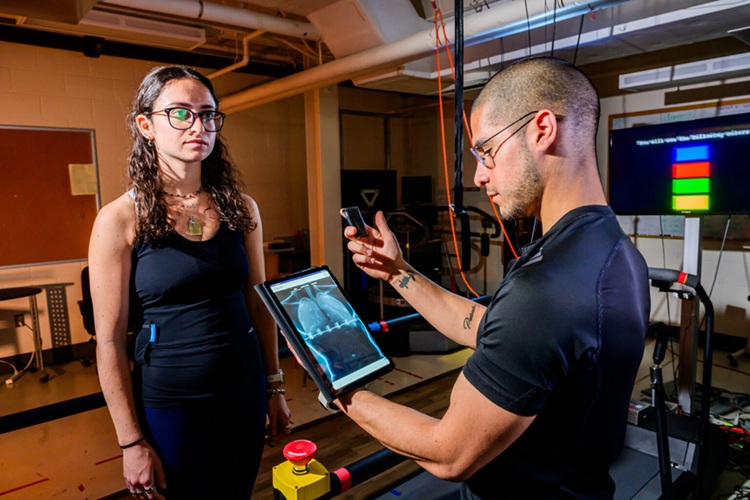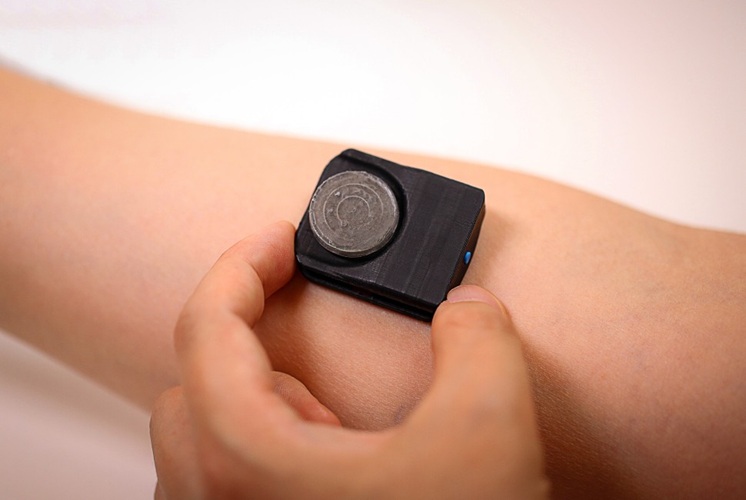Novel Calculators Identify Hospitalized COVID-19 Patients at Greatest Risk of Requiring Mechanical Ventilation or of In-Hospital Death
|
By HospiMedica International staff writers Posted on 01 Mar 2021 |

Illustration
Two novel calculators for predicting which patients admitted to the hospital with COVID-19 are at greatest risk of requiring mechanical ventilation or of in-hospital death have been developed and validated by researchers.
In a new study, researchers at the Massachusetts General Hospital (MGH; Boston, MA, USA) have described how these models could enable clinicians to better stratify risk in COVID-infected patients to optimize care and resource utilization in hospitals faced with ICU capacity constraints. The research team compiled clinical information from 1,042 patients confirmed with COVID-19 who were admitted to five hospitals in the Mass General Brigham health care system during the first three months of the pandemic. Significant associations between clinical, hemodynamic, and laboratory data and the endpoints of in-hospital mortality and mechanical ventilation provided the building blocks for two separate risk stratification models known as the VICE (Ventilation in COVID Estimate) and DICE (Death in COVID Estimate) scores.
Predictive VICE factors uncovered by researchers were diabetes mellitus, oxygen saturation of the blood, and two inflammatory markers: C-reactive protein and lactate dehydrogenase. DICE factors predictive of mortality were age, male sex, coronary artery disease, diabetes mellitus, body mass index, platelet count, and a variety of inflammatory and infectious markers. Researchers were surprised to learn that age was not a significant predictor of whether a patient would require mechanical ventilation. Indeed, other than the youngest patients, the percentage of hospitalized COVID-19 patients requiring mechanical ventilation was similar in each decade of life, though there was a clear correlation between age and risk of in-hospital death, with only 15% survival in patients over 84 requiring mechanical ventilation. Nor was age a predictor of how long a patient would need ventilation. The study found that 59% of patients in the 25-to-34 age group required more than 14 days of ventilation, similar to older age groups.
Another significant finding from the study was that regular use of statins was associated with reduced in-hospital mortality, underscoring the strong links among COVID-19, cardiovascular disease, and inflammation. In another encouraging finding, researchers did not observe any relationship between minority ethnic background of COVID-19 patients and worse clinical outcomes after adjusting for clinical risk.
"By inputting clinical values into these online calculators, physicians can risk-stratify COVID-19 patients upon admission and determine which ones may need the most intensive care and management," says lead author Christopher Nicholson, PhD, a senior research fellow with the MGH Cardiovascular Research Center. "These risk scores allow them to predict with greater than 80% accuracy - higher than established models - patient outcomes, as well as demand for mechanical ventilators and ICU beds, which could impact end-of-life decisions involving COVID-19 patients."
Related Links:
Massachusetts General Hospital
In a new study, researchers at the Massachusetts General Hospital (MGH; Boston, MA, USA) have described how these models could enable clinicians to better stratify risk in COVID-infected patients to optimize care and resource utilization in hospitals faced with ICU capacity constraints. The research team compiled clinical information from 1,042 patients confirmed with COVID-19 who were admitted to five hospitals in the Mass General Brigham health care system during the first three months of the pandemic. Significant associations between clinical, hemodynamic, and laboratory data and the endpoints of in-hospital mortality and mechanical ventilation provided the building blocks for two separate risk stratification models known as the VICE (Ventilation in COVID Estimate) and DICE (Death in COVID Estimate) scores.
Predictive VICE factors uncovered by researchers were diabetes mellitus, oxygen saturation of the blood, and two inflammatory markers: C-reactive protein and lactate dehydrogenase. DICE factors predictive of mortality were age, male sex, coronary artery disease, diabetes mellitus, body mass index, platelet count, and a variety of inflammatory and infectious markers. Researchers were surprised to learn that age was not a significant predictor of whether a patient would require mechanical ventilation. Indeed, other than the youngest patients, the percentage of hospitalized COVID-19 patients requiring mechanical ventilation was similar in each decade of life, though there was a clear correlation between age and risk of in-hospital death, with only 15% survival in patients over 84 requiring mechanical ventilation. Nor was age a predictor of how long a patient would need ventilation. The study found that 59% of patients in the 25-to-34 age group required more than 14 days of ventilation, similar to older age groups.
Another significant finding from the study was that regular use of statins was associated with reduced in-hospital mortality, underscoring the strong links among COVID-19, cardiovascular disease, and inflammation. In another encouraging finding, researchers did not observe any relationship between minority ethnic background of COVID-19 patients and worse clinical outcomes after adjusting for clinical risk.
"By inputting clinical values into these online calculators, physicians can risk-stratify COVID-19 patients upon admission and determine which ones may need the most intensive care and management," says lead author Christopher Nicholson, PhD, a senior research fellow with the MGH Cardiovascular Research Center. "These risk scores allow them to predict with greater than 80% accuracy - higher than established models - patient outcomes, as well as demand for mechanical ventilators and ICU beds, which could impact end-of-life decisions involving COVID-19 patients."
Related Links:
Massachusetts General Hospital
Latest COVID-19 News
- Low-Cost System Detects SARS-CoV-2 Virus in Hospital Air Using High-Tech Bubbles
- World's First Inhalable COVID-19 Vaccine Approved in China
- COVID-19 Vaccine Patch Fights SARS-CoV-2 Variants Better than Needles
- Blood Viscosity Testing Can Predict Risk of Death in Hospitalized COVID-19 Patients
- ‘Covid Computer’ Uses AI to Detect COVID-19 from Chest CT Scans
- MRI Lung-Imaging Technique Shows Cause of Long-COVID Symptoms
- Chest CT Scans of COVID-19 Patients Could Help Distinguish Between SARS-CoV-2 Variants
- Specialized MRI Detects Lung Abnormalities in Non-Hospitalized Long COVID Patients
- AI Algorithm Identifies Hospitalized Patients at Highest Risk of Dying From COVID-19
- Sweat Sensor Detects Key Biomarkers That Provide Early Warning of COVID-19 and Flu
- Study Assesses Impact of COVID-19 on Ventilation/Perfusion Scintigraphy
- CT Imaging Study Finds Vaccination Reduces Risk of COVID-19 Associated Pulmonary Embolism
- Third Day in Hospital a ‘Tipping Point’ in Severity of COVID-19 Pneumonia
- Longer Interval Between COVID-19 Vaccines Generates Up to Nine Times as Many Antibodies
- AI Model for Monitoring COVID-19 Predicts Mortality Within First 30 Days of Admission
- AI Predicts COVID Prognosis at Near-Expert Level Based Off CT Scans
Channels
Critical Care
view channel
Novel Intrabronchial Method Delivers Cell Therapies in Critically Ill Patients on External Lung Support
Until now, administering cell therapies to patients on extracorporeal membrane oxygenation (ECMO)—a life-support system typically used for severe lung failure—has been nearly impossible.... Read more
Generative AI Technology Detects Heart Disease Earlier Than Conventional Methods
Detecting heart dysfunction early using cost-effective and widely accessible tools like electrocardiograms (ECGs) and efficiently directing the right patients for more expensive imaging tests remains a... Read more
Wearable Technology Predicts Cardiovascular Risk by Continuously Monitoring Heart Rate Recovery
The heart's response to physical activity is a vital early indicator of changes in health, particularly in cardiovascular function and mortality. Extensive research has demonstrated a connection between... Read more
Wearable Health Monitoring Device Measures Gases Emitted from and Absorbed by Skin
The skin plays a vital role in protecting our body from external elements. A key component of this protective function is the skin barrier, which consists of tightly woven proteins and fats that help retain... Read moreSurgical Techniques
view channel
Intravascular Imaging for Guiding Stent Implantation Ensures Safer Stenting Procedures
Patients diagnosed with coronary artery disease, which is caused by plaque accumulation within the arteries leading to chest pain, shortness of breath, and potential heart attacks, frequently undergo percutaneous... Read more
World's First AI Surgical Guidance Platform Allows Surgeons to Measure Success in Real-Time
Surgeons have always faced challenges in measuring their progress toward surgical goals during procedures. Traditionally, obtaining measurements required stepping out of the sterile environment to perform... Read morePatient Care
view channel
Portable Biosensor Platform to Reduce Hospital-Acquired Infections
Approximately 4 million patients in the European Union acquire healthcare-associated infections (HAIs) or nosocomial infections each year, with around 37,000 deaths directly resulting from these infections,... Read moreFirst-Of-Its-Kind Portable Germicidal Light Technology Disinfects High-Touch Clinical Surfaces in Seconds
Reducing healthcare-acquired infections (HAIs) remains a pressing issue within global healthcare systems. In the United States alone, 1.7 million patients contract HAIs annually, leading to approximately... Read more
Surgical Capacity Optimization Solution Helps Hospitals Boost OR Utilization
An innovative solution has the capability to transform surgical capacity utilization by targeting the root cause of surgical block time inefficiencies. Fujitsu Limited’s (Tokyo, Japan) Surgical Capacity... Read more
Game-Changing Innovation in Surgical Instrument Sterilization Significantly Improves OR Throughput
A groundbreaking innovation enables hospitals to significantly improve instrument processing time and throughput in operating rooms (ORs) and sterile processing departments. Turbett Surgical, Inc.... Read moreHealth IT
view channel
Printable Molecule-Selective Nanoparticles Enable Mass Production of Wearable Biosensors
The future of medicine is likely to focus on the personalization of healthcare—understanding exactly what an individual requires and delivering the appropriate combination of nutrients, metabolites, and... Read more
Smartwatches Could Detect Congestive Heart Failure
Diagnosing congestive heart failure (CHF) typically requires expensive and time-consuming imaging techniques like echocardiography, also known as cardiac ultrasound. Previously, detecting CHF by analyzing... Read moreBusiness
view channel
Expanded Collaboration to Transform OR Technology Through AI and Automation
The expansion of an existing collaboration between three leading companies aims to develop artificial intelligence (AI)-driven solutions for smart operating rooms with sophisticated monitoring and automation.... Read more


















